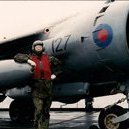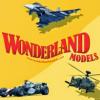Search the Community
Showing results for tags 'marine'.
-
Fouga CM.175 Zéphyr (SH72323) 1:72 Special Hobby Zéphyr was the name given to the maritime variant of the Magister by Fouga, which benefitted from a strengthened airframe, arrestor hook, had no ejection seats, sliding canopies to facilitate take-offs with the canopy open, and a nose-mounted light to assist with night landings on carriers. It was tested on two British carriers late in the 1950s, with only a small number of airframes delivered, totalling 30 production aircraft and two prototypes. Only one squadron was formed at the end of 1959 as a consequence, with the active airframes rotated into storage to even out the flight hours and prolong the length of service of the airframe in French service. Although the Zéphyr was capable of carrying gun pods under the wings, they could also carry guns in the nose, although they were seldom used in practice due the type’s given task, and weight savings also saves fuel. They were used as aircrew trainers at Hyéres, where they taught the novice pilots the intricacies of the perishable skill that is carrier landing at the Deck Training School. In the 60s they also formed an aerobatic team by the name of Patrouille de Voltige d'Hyéres, which translates as Hyéres Aerobatic Patrol, who took over the name of the Patrouille de France during austerity cut-backs to retain the prestige of French aviation, using the less expensive Zéphyr, and freeing up the costly front-line capable fighters that they previously used. The Kit This is a reboxing of the 2015 kit from Special Hobby with new decals and some optional extras that you can pick up while you’re shopping to improve the kit further. The kit arrives in a small end-opening box, as the Zéphyr is a small aircraft, and inside are four sprues in grey styrene, a separately bagged clear sprue, and a decal sheet in yet another bag. The instruction booklet is portrait A5 and printed on glossy paper with colour profiles at the rear, and adverts for other SH products on the rearmost pages. Detail is excellent for such a diminutive aircraft, although as with many 1:72 kits the panel lines could be deemed a little deep, although they will doubtless reduce under several coats of paint. Construction begins with the double cockpit, which is well-done with separate seats, instrument panels with decals, plus control columns and throttle levers completing the appointment of this key area. The fuselage halves are prepared with intake trunking inserts that slot inside the engine nacelles after being painted the correct colours, and having the front and rear engine faces emplaced. Externally, the intake lips, exhausts and a number of other small parts are fitted, then the cockpit is trapped between the halves and glued together, adding an equipment deck behind the crew stations and cutting off a blade antenna just behind the cockpit near a small intake. More detail parts are scabbed on the underside toward the rear along with a central strake, two-part tail-cone and the arrestor gear that slots into a triangular aperture. At the front, the nose gear bay is made from a tapering L-shaped former that is trapped between the two nose-cone halves that are then joined to the fuselage after painting the interior while you still have the chance. Returning to the rear, the diagonal tail fins are fitted using pegs with tiny inserts at the root, and actuators near the tips. Each wing is made from a top and bottom surfaces, but first the gear bay inserts are added to the lower part, and a choice of deployed or flush air-brakes that apply for both sides of each wing. The upper wings have the top of the tip-tanks moulded-in, and have separate lower halves added once the two wing halves are mated, with a pair of clear parts for the lights. The nose gear leg has a two-part wheel that slots onto the leg, plus a small front bay door and two side doors, then the two main gear legs are installed in their bays with retraction jacks and wheels, plus a pair of doors on the outer edge, and a single inner door with separate double retraction jack. The model is completed by gluing the rails to the edge of the cockpit and adding the fixed windscreen, central and rear portions to the fuselage, then deciding whether to close up the sliding portions or leave them open, which is done just like the real thing, remembering to add the periscope to the central section, which has parts inside and outside of the canopy. Markings There are four options on the decal sheet, all of which are painted overall with aluminium paint rather than bare metal, and each has a red lower nose, rudder and elevator fins on all but one of the options, which is almost totally aluminium. You can build one of the following from the box: S/n.4, ex-Escadrille 59s, BAN Hyéres, latterly on display in Belgium S/n.4, ex-Escadrille 59s, BAN Hyéres, France late 1970s to 1994 S/n.16, ex-Escadrille 59s, BAN Hyéres, France, late 1970s to 1994 S/n.4, ex-Escadrille 57s, Ecole de Chasse de la Marine, Khouribga, Morocco, 1959-60 and Port Lyautey, Morocco, 1960-62 Decals are by Special Hobby’s usual partners, and have good registration, sharpness and colour density, with a thin gloss carrier film cut close to the printed areas. Conclusion The Zéphyr was a niche type that saw extended service in predominantly French hands, and Special Hobby have done a great job of rendering the details of this diminutive early jet. Highly recommended. Review sample courtesy of
-
US Marine Guard ICM 1:16 ICM are continuing to release kits, in their World Guards series. The fifth to be issued is that of a US Marine Sergeant if full dress uniform. The two sprues of grey styrene are very well moulded with no sign of flash or other imperfections, and while the build is relatively simple, the painting is certainly not. Being 1:16 scale it’s large enough for the detail to be seen and painted, yet small enough to have a nice collection in a display cabinet. I have to say, first of all, is that the instructions are not very clear. They consist of a colour drawing of the completed and painted model, with the parts numbered and arrowed. Seeing that the kit is fairly straightforward it probably won’t worry the seasoned figure builder, but it might put off the beginner. The two legs are glued together as the waist, then the two part torso is glued together and attached to the legs. The bottom of the tunic is made up from threes parts, rear and two front pieces. These are joined to the waist area, under the belt. The two separate epaulettes are then glued to the shoulders. The head is also in two halves, front and rear. Since most of the join is behind the ears, there shouldn’t be too much problem cleaning it up. The hat is also in two parts, the lower section, which includes the brim and the upper section. The separate arms are posed in such a way as they should just sit nicely, one are behind the Marines back, the other, with separate fingers, holding the rifle. The main section of the rifle itself is a single piece part, with separate grip area where the Marines right hand holds it, and taut sling. The kit comes with a separate scabbard, which is glued to the kits belt on the left hand side, using the joining piece included. The kit comes with a nicely moulded pedestal, the top of which has a selection of different finishes, plain, curved cobbles, straight cobbles or flag stones. Alternatively the figure can be presented on a plain flat base. Painting is going to be a case of patience and a very small brush as mainly of the really fine details are moulded to the uniform. But with care the model should come out looking rather splendid. Conclusion This is not my normal fare when it comes to modelling, what figures I have built have been in 1:6 scale and more fantasy based. This is really nicely made though and although quite small, (you will need an optivisor to paint the finer details), and it will look really nice in the display cabinet. I would have liked to have seen more of the details moulded separately, but that’s just me. Review sample courtesy of
-
In our sale we've got up to a whopping 49% off these fantastic naval model kits from Revell and Italeri right now! These great plastic model kits include the wonderfully detailed 1/132 USS Bon Homme Richard (1766). Two German U-Boats: A 1/72 German Type VIIC Submarine and a 1/72 US Navy Skipjack Class Submarine. Also on offer we have the very popular 1/35 British Vosper MTB 74 St Nazaire Raid Kit! Check them out below and watch out for more great offers and new releases from Wonderland Models! For full details, please see our newsletter here.
-
Hi, Someone knows if I can find (and where) the French Navy aircraft fonts ? I need to print some decals of Super Etrendard Modernise for a event, so if exists a font file, or even a draw with the letters, will accelerate the process. Letters Numbers Thanks,
-
Finally finished my F-104G aircraft 26 + 90 from MFG 2, German Marine Hasegawa kit with Ultracast detail set in resin. Resin bang-seat. Cannot remember if the burner can were resin as well. I've used Daco's excellent decal set for this. Future on the canopy and modelmaster gloss and flat lacquer mixed. Thought a German Marineflieger would be rather weathered, considering its operational environments. Clean, no weapons save the internal gun. I scatched the chaff / flare launchers aft and the mounting plates they sit on. I also scratched a position light on the spine and under the belly, in front of the vertical fin. Easy kit - it went together with no problems. Kinks here and there entirely my own creations. I hope you like it!
- 11 replies
-
- 10
-

-
- f-104
- starfighter
-
(and 3 more)
Tagged with:






